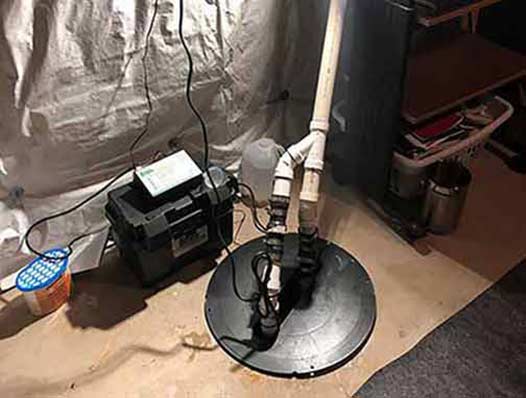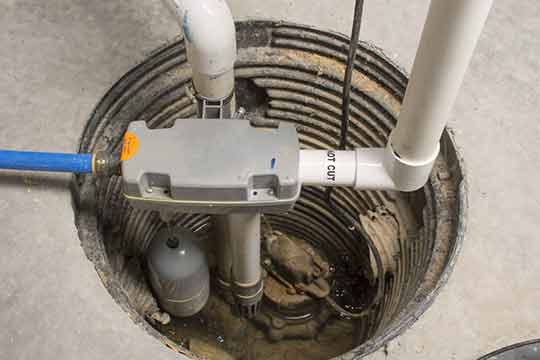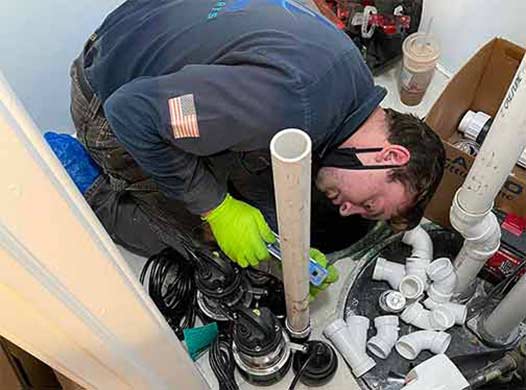
As a homeowner, it is important to understand the various systems and appliances in your house, their maintenance requirements, and when it is time for replacement. One such essential system is the sump pump, which plays a crucial role in preventing water damage and basement flooding. This guide aims to provide homeowners with an understanding of sump pump replacement, including why, when, and how it should be done.
Understanding the Importance of a Sump Pump
Before delving into the details of sump pump replacement, it is vital to understand why a sump pump is necessary for your home. A sump pump is a device that helps prevent water accumulation in your basement or crawl space. It is typically installed in a pit or sump basin, where water collects and flows into the pump.
The primary purpose of a sump pump is to prevent water damage caused by various factors, including heavy rainfall, melting snow, or high water table. It helps keep your home’s foundation dry, prevents mold and mildew growth, and protects valuable items in your basement from being ruined. Regular maintenance of your sump pump is important to ensure its optimal functionality, but eventually, replacement becomes necessary.
Signs that Indicate Sump Pump Replacement
Like any other mechanical device, a sump pump has a lifespan and will eventually require replacement. Ignoring the signs of a failing sump pump can lead to serious water damage and costly repairs. Here are some common signs that indicate it may be time to replace your sump pump:
- Frequent cycling: If your sump pump is turning on and off more frequently than usual, it could be a sign of an underlying problem. This may indicate that your sump pump is no longer efficiently draining water, which means it is time for a replacement.
- Strange sounds: Unusual noises coming from your sump pump, such as grinding or rattling sounds, may suggest mechanical issues or damage. If these sounds persist even after maintenance, it is likely that a replacement is necessary.
- Lack of responsiveness: A sump pump should start automatically in response to rising water levels. If your sump pump is failing to activate or is not pumping water out effectively, it is a clear indication that it needs to be replaced.
- Extensive age: Sump pumps typically have a lifespan of around ten years. If your sump pump is approaching or has exceeded this timeframe, replacing it proactively is a wise decision to prevent unexpected failures.
- Visible rust or corrosion: Excessive rust or corrosion on the sump pump’s components can compromise its functionality and efficiency. If you notice significant rust or corrosion, it is essential to consider a replacement before it fails completely.

Selecting the Right Replacement Sump Pump
When it comes to choosing a replacement sump pump for your home, you have several options to consider. Different factors, such as your specific needs, budget, and local regulations, will influence your decision-making process. It is crucial to understand the various types of sump pumps available:
1. Submersible Sump Pump
Submersible sump pumps are installed inside the sump pit or basin and remain submerged in water. They are highly efficient, quieter, and suitable for homes where the sump pit is regularly filled with water. These pumps are capable of handling high water volumes and are less prone to clogging due to their design.
2. Pedestal Sump Pump
Pedestal sump pumps are installed above the sump pit and have a motor mounted on a pedestal. Only the impeller is placed in the water. They are an economical choice and easier to access for maintenance. However, they tend to produce more noise and may not be as efficient as submersible pumps.
3. Battery Backup Sump Pump
Battery backup sump pumps are a valuable addition to your primary sump pump system. They provide additional protection in case of power outages or when the primary pump fails. These pumps are powered by a battery, ensuring continuous functionality during emergencies. They provide homeowners with peace of mind, especially in areas prone to severe storms or power disruptions.

Steps to Replace Your Sump Pump
While hiring a professional for sump pump replacement is recommended, some homeowners may choose to tackle the task themselves. If you decide to replace your sump pump independently, it is essential to follow these steps:
- Gather the necessary tools: Before you begin the replacement process, gather the tools you will need. These may include a new sump pump, PVC piping, couplings, a hacksaw, a utility knife, a screwdriver, and a wrench.
- Turn off the power supply: Locate the dedicated circuit breaker for your sump pump and switch it off. This ensures your safety during the replacement process.
- Drain the sump pit: Use a pump or a bucket to remove any water from the sump pit. This will make it easier to access the old sump pump and remove it.
- Disconnect the old sump pump: Unplug the old sump pump from the power source and disconnect any necessary piping. Keep in mind that components may vary depending on the type and model of your sump pump.
- Install the new sump pump: Follow the manufacturer’s instructions carefully to install the new sump pump correctly. Ensure all connections are secure and properly sealed to prevent leaks.
- Test the new sump pump: Once the installation is complete, pour water into the sump pit to test the functionality of the new sump pump. Make sure it activates automatically and pumps out the water effectively.
- Dispose of the old sump pump: Properly dispose of the old sump pump according to local regulations. If it is in decent condition, you may consider donating it or recycling it.
Maintaining Your Sump Pump
Regular maintenance is crucial to ensure the longevity and effectiveness of your sump pump. Following these maintenance tips will help keep your sump pump in optimal condition:
- Clean the sump pit: Periodically check the sump pit for any debris, dirt, or sediment that may obstruct the pump’s operation. Clean the pit and remove any obstructions to prevent clogging.
- Test the sump pump: Test the sump pump at least once every three months by pouring water into the sump pit. Observe if the pump activates correctly and discharges water efficiently.
- Inspect the discharge line: Regularly inspect the discharge line to ensure it is free from any blockages or obstructions. The line should be directing water away from your foundation and must be properly extended to prevent water from returning to the basement.
- Check the power supply: Ensure the sump pump is securely plugged into a grounded outlet. Test the outlet periodically to make sure it is supplying power to the pump.
- Replace the backup battery: If your sump pump has a battery backup system, check the battery regularly and replace it according to the manufacturer’s guidelines. This ensures your pump will continue to function during power outages.
In Summary
Understanding the importance of a sump pump and recognizing the signs that indicate the need for replacement is crucial for homeowners. Regular maintenance and timely replacement of a failing sump pump can help prevent water damage, protect your home’s foundation, and provide you with peace of mind. By following the steps outlined in this guide, homeowners can ensure their sump pump system operates efficiently and effectively for years to come.

